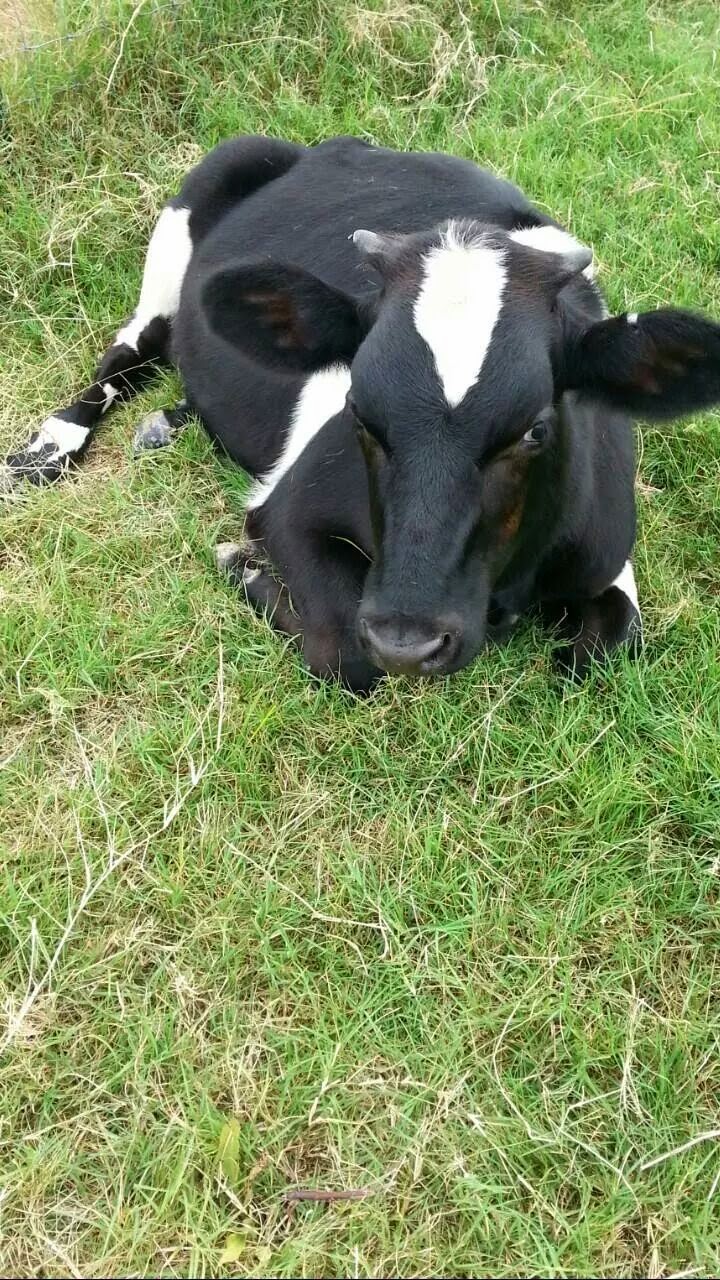 |
| Honey With Horns about 9 months old |
The truth is all male and female bovines have horns except:
- Angus
- Red Angus
- Brangus
- Red Brangus
- Galloway
- Belted Galloway
- Red Poll
- Black Maximizers
- Speckle Parks
- British Whites
- Amerifax
- Senepol
- American White Park (though 3 to 5% are horned)
- Murray Grey
- Jamaica Black
- Jamaica Red
These breeds are naturally polled. They were not bred that way, they are created that way. That's a lot of breeds you say? Well,many more are horned. The only somewhat common dairy breed on this list is the Belted Galloway, which is more of a dual purpose breed. We have dairy cows, they were born with growing horns.
As the horns continued to grow we loved them even more. They gave Honey such character and personality. The decision to dehorn them was last minute and not really thought out. But, it's one such decision where there is not a right way or a wrong way, and it really depends on your way of life with cows. These are family cows. Things may look a bit different if we were running several hundred head.
A lot of my mommy friends would say "the horns gotta go". It's a safety issue. I haven't met someone yet who has dehorned for any other reason than safety. Of course there is always the fact that they sell better... because the person buying them feels safer without the horns. And we have children and cows are big and yes, the horns gotta go.
If you happen to be like us and waited until your heifer or bull was nearing the 1 year mark, this post is for you. Here's how it went:
Go to a vet! When horns get this developed the dehorning paste doesn't work well, and disbudding requires surgery because they're not really buds anymore. Plus, this hurts. You don't want her to associate you with this kind of pain. If this is your family cow, go to a vet.
The vet puts your 500+lb cow in a headlock/chute. He then puts nose tongs on and ties her head up to one side. She can't move but she can see, so I would suggest that you (as the owner) stand behind her. Doc will shave around the horns to make sure the cut is good. He takes a tool that looks like giant hedge clippers and puts it directly over the horn. Chop. There are nerve endings in horns and when they're this developed blood spews everywhere. Your cow may scream at this point. I'd imagine it hurts.
 |
| dehorning clippers |
 |
| nose tongs |
Be aware that she'll now have a giant hole in both sides of her head. And she'll be bleeding down the side of her face. The once precious cow you loved will now look very different. It'll take some time getting used to, and if she is a family cow like ours, it'll take a bit longer.
 |
| It sprays black |
 |
| Bella's Ooziness |
 |
| After the cotton was removed |
NOTE: DO THIS IN THE WINTER. FLIES WILL LAY EGGS IN THE WOUNDS DURING THE HOTTER MONTHS AND YOU'LL HAVE A WHOLE NEW PROBLEM ON YOUR HANDs.
 |
| Cassie Perfectly Healing |
And that's it. I would recommend not waiting until they are older if you can help it. If you get a family cow older than this then leave those horns. The stress from becoming a new family member is enough for her. And if she's in milk, I think the adrenaline and stress from dehorning would definitely affect milk production. Get those horns when they're young. Ideally 2-4 weeks old is key.
Good luck~
 |
| The New Honey sans horns. 1 year old. |
No comments:
Post a Comment